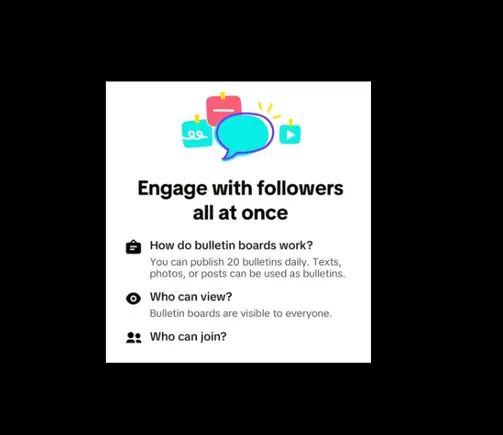5 Revenue-Raising Secrets to Maintain Happy Employees
The Evolution of Modern Business The old norms of business are out the window; employee satisfaction has replaced the old idea that we should meet every demand of our place of work. Likely due to advances in technology and...

The Evolution of Modern Business
The old norms of business are out the window; employee satisfaction has replaced the old idea that we should meet every demand of our place of work. Likely due to advances in technology and always-available communication, many jobs that were once tethered to the office from 9-5 every Monday-Friday can be done from our living rooms.
Change is inevitable, and positive change can save you money and increase your company’s revenue. The most straightforward modifications may actually save you money, save your management team unnecessary headaches, and create a culture of positivity among your workforce. Below, we’ve compiled our top 5 revenue-raising secrets to happy employees and more productive teams.
1. Prioritize Flexibility
As we’ve seen in the post-2020 world, people are seeking positions that allow flexibility in their schedules. Remote working is the new norm and its benefits far outweigh the costs. Working in choice locations has become a coveted perk in recent years as more companies go permanently remote. Findings from the National Bureau of Economic Research cite that people have extended their workdays since transitioning to Work From Home (WFH) at an average of 48.5 minutes per day. With the flexibility to work outside the office, people are likelier to send a quick email or two outside regular working hours.
Further, the ability to achieve a work-life balance is important to employees. A Pew Research study shows that 64% of WFH employees find balancing their work and personal life easier while not impeding their ability to advance in their field.
Remote work likely reduces costs in company utility bills, employee clothing, and commuting costs. Even if your company is one that requires some in-office work, it’s best if you can offer your employees some flexibility surrounding health and family obligations when they arise.
2. Embrace the Gray Area of the New Workplace
We all need a break sometimes, and it feels especially rewarding knowing you’ve earned that time off. With the dynamic nature of teams in the modern workplace, it’s inevitable to reconsider the black-and-white time restrictions of the past.
If they get the work done well in less time, give that time back to them. When workers know they can spend that extra time meaningfully as soon as they complete their job well, morale and productivity will be boosted. They’ll come back happy to get the next thing underway.
As a leader, you may be struggling with knowing exactly what your team is doing with their flexible time after completing assignments or waiting for communications from other areas. If team performance is not suffering, who cares? It’s time to broaden work-time policies to reflect evolving workspaces and respect employee effort. Tom Brand, president of MERGE Atlanta refers to his new policy as “managing in the gray” where he chooses to honor the diverse nature of his team by managing output rather than time spent working. By taking a step back in managing teams, you can simplify your routine and likely boost motivation within your department.
3. Re-Evaluating the Grind
In addition to the importance of work-life balance, time is important to both employers and employees. This can certainly look different depending on the needs of your team, but when employees feel their work and time are valued, performance and overall employee satisfaction increase, and likely results in higher retention rates are achieved
One option that is continuously growing in popularity is the four-day workweek. More and more companies are testing this model and seeing positive outcomes. A 2019 trial of 3-day weekends at Microsoft Japan reported an increase of 40% in productivity. Not only does it urge people to finish their work efficiently, but also recognizes that people have outside lives and shows appreciation for rest and recuperation.
Some other reasons to work a 4-day week are an improvement in mental health, result-driven performance, and a smaller carbon footprint for the company. The public benefit corporation, Kickstarter, piloted a 4-day workweek throughout 2022, and has reported that it’s helped employees “live brighter and fuller lives… And to return to work refreshed.” With mental health at the forefront of job satisfaction discussions, small changes like incorporating 3-day weekends allow people to live a fuller life outside of work.
4. Encourage Time Off
If you’re noticing a running theme here, it’s because people love added personal time outside of work. Work culture in the United States promotes burnout for the sake of productivity and job security, but at what cost? A 2021 study found that regularly working longer hours increases the possibility of heart attack and stroke, both leading causes of death in the United States. So why aren’t employees using their PTO?
Skipping vacation time is often supported and not seen as a bad thing from co-workers’ and management’s viewpoints. A U.S. Travel Association study cites that 768 million vacation days went unused in 2019 citing the cost of travel and failure to plan as the biggest factors associated with this factor. We have to question if the real thing holding people back from using their PTO is due to constant connection, or the idea of being always reachable in case of an emergency. The guilt associated with ‘leaving’ your team to fend for themselves stresses many people out and deters them from taking vacations.
One solution some companies are testing is an Open PTO policy, AKA unlimited PTO. In this model, employees can take off time as needed without any limitations. In the ever-changing workplace, this is just another ‘gray area’ management would need to navigate. Indeed piloted an Open PTO policy in 2017 and found a 30% increase in vacation days taken by employees, extremely productive outcomes, and record company growth. It’s a system worth considering if your target employee base includes a younger talent pool, employee trust and loyalty, and potentially a faster hiring process due to widespread attraction to unlimited PTO policies.
5. Explore Higher Salary Standards
You may not think of a higher cost of doing business as a way to gain revenue, but paying your employees more is a surefire way to attract and retain valuable talent, likely increasing productivity within your teams. In a world of ever-increasing costs, financial security is a highly sought-after feature in trending job searches.
Employee financial security is a hot topic recently due to the rapidly rising cost of living. In 2018, the Harvard Business Review reported that when employees get unexpected raises, they tend to work harder than required, even if they aren’t afraid of getting fired. By showing there is an opportunity for financial growth, you engrain a sense of trust within your team.
Final Thoughts
The question you need to ask yourself: Is skilled labor worth more money for fewer hours worked in modern business? We know that in our ever-connected world, working is adapting to reflect a reality that focuses on mental health, opportunities for flexibility, and basic needs being met.
All things considered, revenue growth is still possible.
Prioritize Flexibility in where and when your team works whenever possible. We all work differently and work better when our needs are being met.Embrace the Gray Area in adopting performance-based scheduling. Reward your team with some extra time off for meeting goals whether it’s in milestones or completing projects. Or, consider letting people go home or log off for the day after completing their necessary tasks without losing pay.Redefine the Work Week by testing a 3-day weekend program for your company. See if you observe a noticeable change in the morale of teams throughout the organization and a steep decline in The Sunday Scaries. We all love opportunities for extra time to do what we love, right?Encourage Time Off and encourage a culture where employees are not scared to use their PTO at their discretion. More companies are starting to test Open PTO policies that allow workers to take off unlimited time without consequence. It’s something to consider as the younger workforce values flexibility in their travel and vacation time.Explore Higher Salary Standards in your company. Are your policies properly valuing your talent while allowing them to live comfortably? Employees need to feel safe and fairly compensated to build loyalty and boost productivity. Some companies are setting minimum yearly salaries and seeing positive results.
Remember: happy employees create better businesses.

 JimMin
JimMin 
































